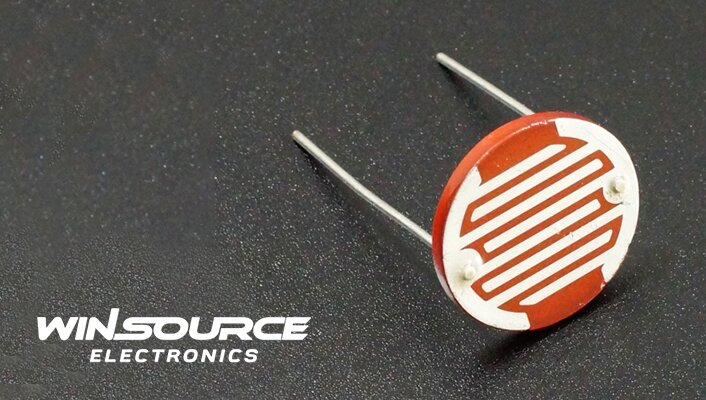
Table of Contents
ToggleIntroduce
Photoresistors, also called LDRs or photocells, are crucial in converting light energy into electrical signals in electronics and optoelectronics. These small parts are important in many uses as they can detect and respond to different levels of light. This article explains how photoresistors work, their ability to convert light into electricity, and their different uses.
Learn about photoresistors
Photoresistors are passive electronic components that change resistance when exposed to light. Semiconductor materials such as cadmium sulfide (CdS) or cadmium selenide (CdSe) typically make them, and they exhibit a unique property called photoconductivity. Photoconductivity is the phenomenon in which a material’s electrical conductivity increases as it absorbs photons, thereby reducing its resistance. The basic structure of a photoresistor consists of a photosensitive layer deposited on a substrate and two electrical contacts.
Photoelectric conversion
We can explain the photoelectric conversion mechanism of the photoresistor as follows:
Incident light: When light strikes the photosensitive layer of a photoresistor, it excites electrons in the material.
Electron-hole pairs: Absorbed photons create electron-hole pairs within the semiconductor material. Electrons are excited from the valence band to the conduction band, leaving behind positively charged holes.
Increased conductivity: When electron-hole pairs are created, the material becomes more conductive and less resistant.
Electrical signal: When the resistance changes, the voltage or current across a photoresistor also changes. You can use this to determine if there is light and how bright it is.
Photosensitive application fields
People widely use photoresistors because they sense light and people can easily incorporate them into electronic circuits. Photoresistors commonly find application in the following key areas:
Phototube Light Sensor: Photoresistor is commonly used in automatic lighting systems, street lights, and outdoor security lights. They enable these systems to adjust light output based on ambient light conditions, saving energy and improving safety.
Camera Exposure Control: Photoresistors in photography measure light and adjust camera settings for better exposure. This ensures a well-balanced and correctly exposed photo.
Solar Equipment: Photoresistors are an important component of solar panels and solar outdoor equipment. They help regulate the energy captured from the sun by tracking changes in light intensity.
Light Level Alarms: Photoresistors in alarm systems trigger alarms when there’s a big change in light level. They use them to detect fires and intruders in buildings for security purposes.
Plant Growth Monitoring: Photoresistors are used in farming to measure light levels for plants to grow. They help maintain optimal conditions for photosynthesis by adjusting artificial lighting accordingly.
Ambient light sensing in displays: In smartphones and other devices, photoresistors are used for automatic screen brightness adjustment. They ensure that the screen is comfortably visible in different lighting conditions while saving battery life.
Optical Communication: Photoresistors play a role in optical communication systems by converting optical signals into electrical signals. Fiber optic communications use them to detect light signals transmitted through optical fibers.
In conclusion
Photoresistors are indispensable components in photoelectric conversion and photosensitive applications. Solar panels are important for saving energy, automating tasks, and improving user experience. They have the ability to turn light into electricity and can work in various situations. As technology continues to advance, the role of photoresistors in innovative applications is likely to expand, further demonstrating their importance in electronics and optoelectronics.

COMMENTS